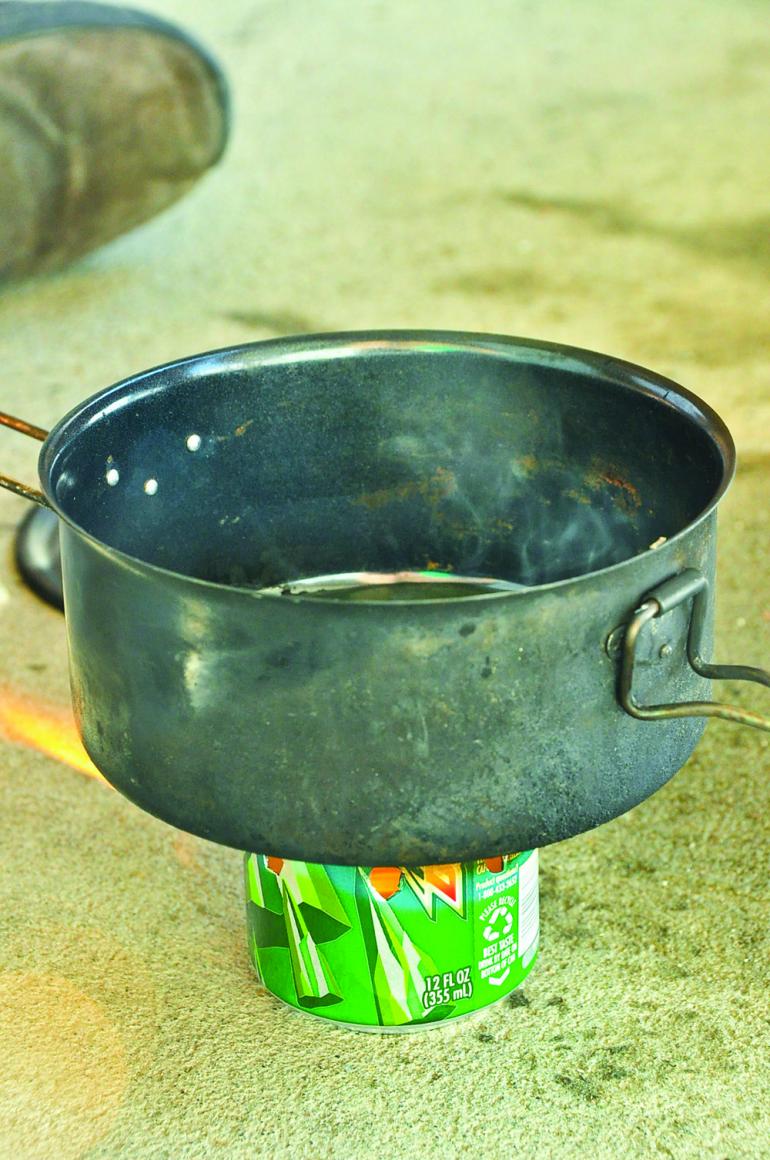MacGruber Cooking
A DIY stove on a budget.
If the recession has stolen all your gear cash, don't fret. Embrace your new hobo lifestyle by learning how to make a Super Cat stove. The Super Cat is bare bones, yet extremely effective, made from nothing more than a tin or aluminum can. To make it, you'll need a can, the pliers and scissors from your Leatherman, a Sharpie, a hole punch or something with a sharp point, and some denatured alcohol.
Step 1: Place the Sharpie sideways on a stack of books or a 2x4 and rotate the can in place, marking the line on which you will cut. The height of the line should range between 2" and 3" to avoid instability. If you're using a tin can instead of a soda can, a cut may not be necessary at all.
Step 2: Start your cut above the line in order to save the bottom half. It's important to cut this as straight as possible so that it will seal when the cook pot is placed on top.
Step 3: Punch a series of holes around the rim. Precise numbers of holes vary by design; however, I used eight and had a decently successful stove. Some people suggest smashing down any burs around the holes with a pair of pliers to minimize turbulence for the escaping gas.
Step 4: A quarter to a half-inch of alcohol is enough to last for several minutes, which is about as long as it takes to boil a small pot of water on the stove. Light the stove by tipping it slightly to the side to allow a lighter or match to access the fuel. We wouldn't want to be responsible for you lighting your face on fire, so use common sense and avoid pouring the fuel all over yourself prior to lighting. Use dirt or rocks to keep the stove level and stable, and don't use a pot that's more than 6-8" in diameter.
To extinguish the flame, place a larger can or the cook pot (upside-down) over the stove for 20-30 seconds. Avoid dousing the stove in water; you'll spray burning fuel across the ground. And be careful about touching the stove, as it will be quite hot after several minutes.
Homemade camp stoves are not perfect and do have flaws that warrant some attention. Your design may take a few tries to get right, but there are a number of websites (such as jwbasecamp.com) that offer advice as well as information on the different types, designs, and fuels for hobo stoves.













